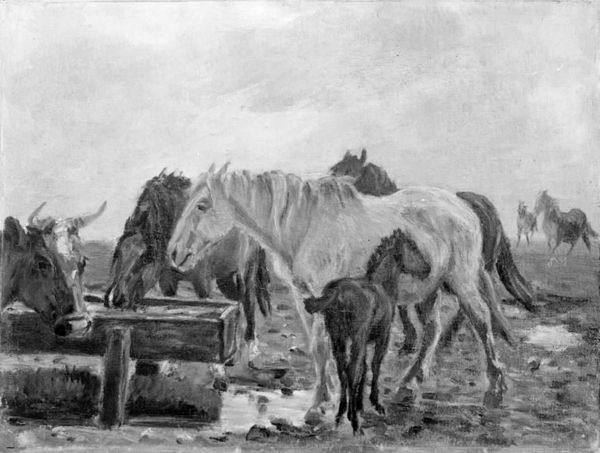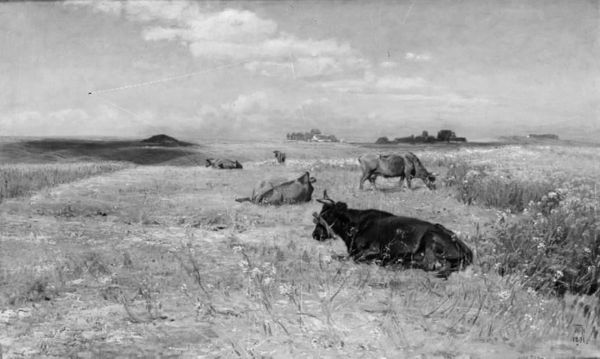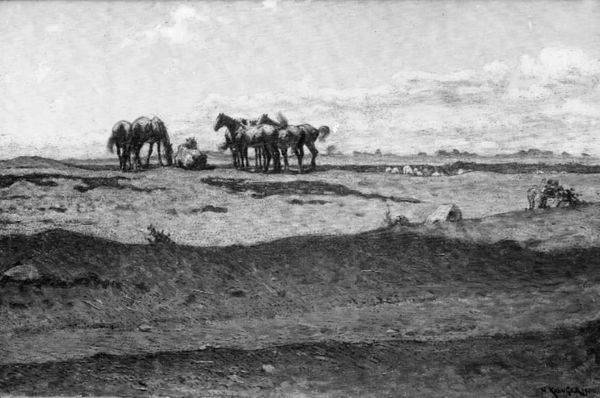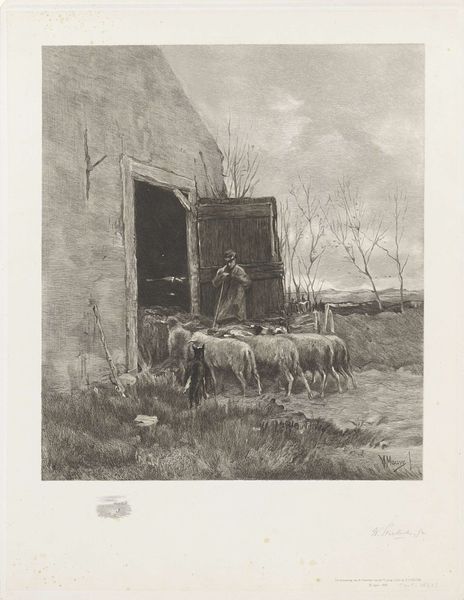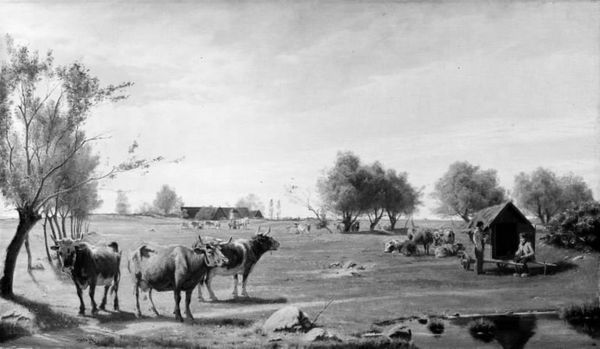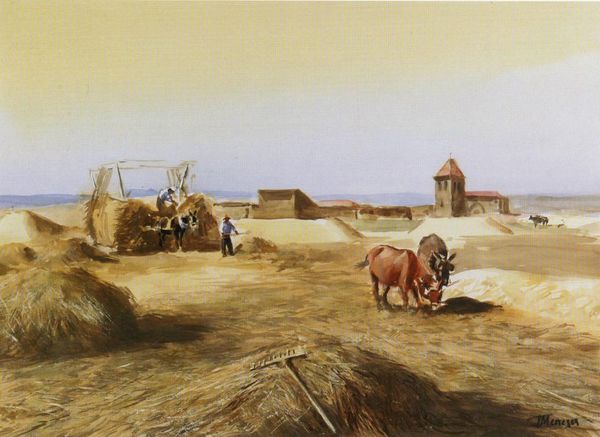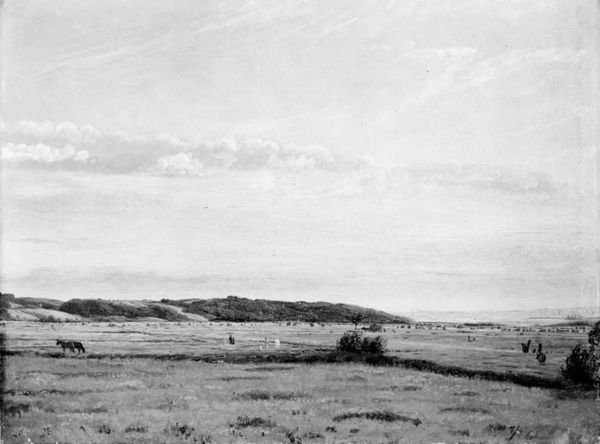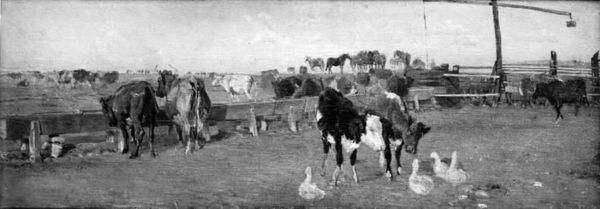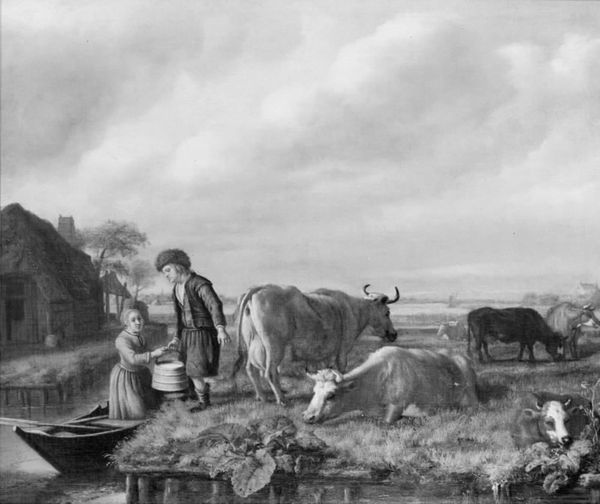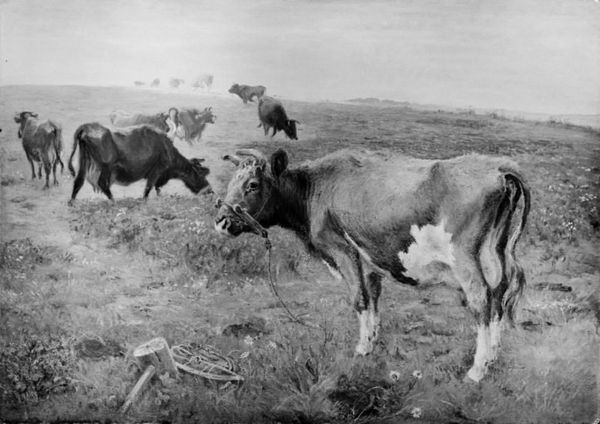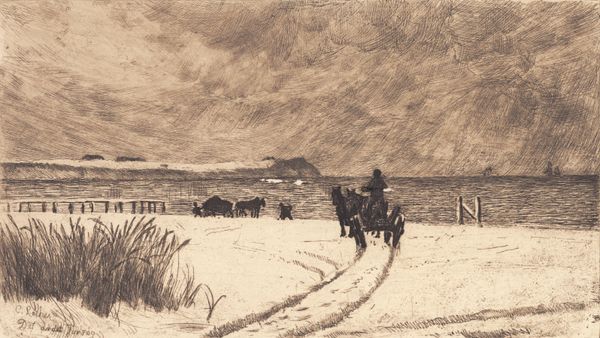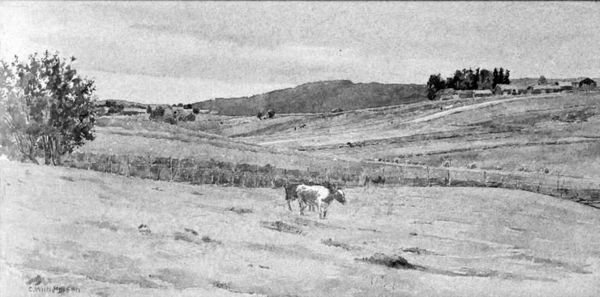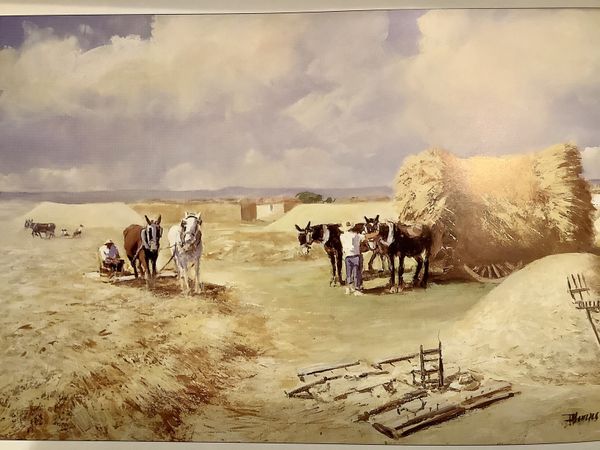
painting
#
painting
#
countryside
#
landscape
#
black and white
#
monochrome photography
#
genre-painting
#
monochrome
#
skyscape
#
monochrome
Dimensions: 31.5 cm (height) x 53.5 cm (width) (Netto)
Editor: Here we have "Fåreflok foran en jordhule med folk" by Hans Smidth, created sometime between 1854 and 1917. It’s a painting, predominantly in monochrome, depicting a sheep flock in a landscape setting. The whole image feels stark and quite... humble, even a little bleak. What jumps out to you about this piece? Curator: Immediately, I'm drawn to the construction of the earth dwelling. Note how the materials—presumably locally sourced earth and perhaps some timber—blend seamlessly into the surrounding landscape. It begs the question, what does this integration of the built environment and nature tell us about the relationship between these people and their labor? Editor: That’s a good point. It does feel very much like the dwelling is part of the landscape, not imposed upon it. So, you’re seeing a direct reflection of the social context in the building materials? Curator: Precisely. The artist highlights the raw materials and the practical construction, drawing attention to the labour inherent in creating even basic shelter. Consider also the division of labour evident. There’s tending to the flock, the implicit work of maintaining the structure, perhaps even textile production suggested by the sheep themselves. How do these details contribute to your sense of “bleakness”? Editor: I think it’s that the lack of color, combined with what you point out – the focus on labor and the basic materials – strips away any romanticism. It feels very matter-of-fact, emphasizing the harshness perhaps. Curator: Yes. This isn't a picturesque view of rural life, is it? The painting implicates the viewer in the cycle of production and consumption, nudging us to consider the often-overlooked realities behind everyday resources. It questions our preconceptions of art by merging 'high' art, painting, with observations about agrarian materiality. Editor: That definitely reframes how I see it. Instead of just bleak, it's more... grounded, conscious of its own construction and what it represents. Thanks for that! Curator: Indeed, understanding art through its materials and modes of production opens up entirely new avenues of interpretation. It challenges us to look beyond aesthetic appeal and see art as a product and a record of human endeavor.
Comments
No comments
Be the first to comment and join the conversation on the ultimate creative platform.
